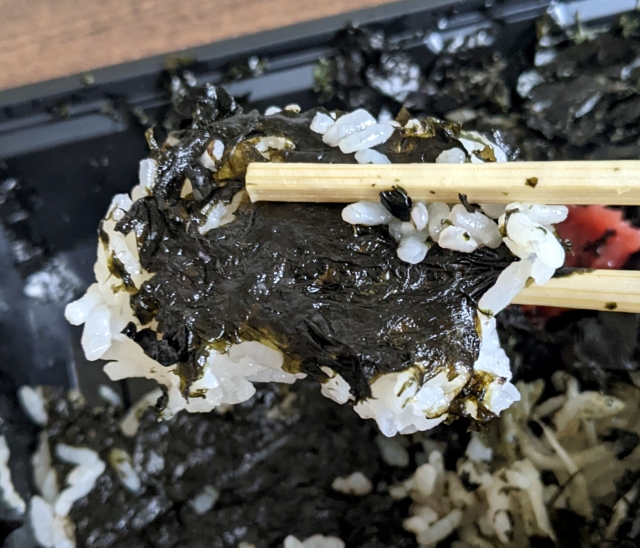
Mr. Sato tries the ultimate in luxurious noriben and equates it to a microcosm of the universe.
Yamamotoyama is a Japanese tea merchant that also sells ultra-premium nori seaweed and select sweet treats. When our intrepid Japanese-language reporter Mr. Sato caught wind that they sell a nori bento (“noriben”) that makes use of top-grade nori, he was insatiably curious. After all, you probably know what you’re doing if your shop has been around since 1690!
For reference, a noriben is usually a simple bento with rice and seaweed being the core components, although it’s often sold with fried fish or a couple of veggies included on top as well. It’s an affordable alternative to a bento filled with meat or seafood products as the main ingredients, similar in that way to a hinomaru bento, which is essentially a dish of rice with a single umeboshi pickled plum in the center to echo the design of Japan’s rising sun flag, which is known as “hinomaru” in Japan.
▼ This is Nagomi no Yoneya’s high-quality hinomaru bento that Mr. Sato purchased last year in Shinjuku’s Isetan department store which still only set him back 648 yen (US$4.48).
Therefore, the prospect of an “ultimate” noriben was very intriguing. Just how could something so seemingly simple be turned into a luxury product? To satisfy his mind and stomach, Mr. Sato headed to the Nihonbashi Takashimaya Mitsui Building in Tokyo’s Nihonbashi district, where Yamamotoyama operates the Fujie Tearoom that sells the super special noriben.
Dine-in at the tearoom is conducted with a 100-percent reservation policy and bento can be purchased for takeout also on a kind of staggered schedule. Mr. Sato didn’t know this system ahead of time, so he ordered in person and was instructed to pick it up 30 minutes later. He recommends calling ahead if you’d like to get a bento to go.
Importantly, there are three types of takeout noriben to choose from:
The beef sukiyaki noriben and salmon noriben are priced at 2,000 yen and 1,600 yen respectively. That’s a bit steep, but Mr. Sato didn’t think it was strange since Yamamotoyama is such a well-established shop.
However delicious those two sounded, he only had eyes for the third type, called the Nihonbashi noriben, which makes use of the ultra-premium nori.
At 2,200 yen, it’s even more expensive than the meat or fish versions–and doesn’t even come with any side dishes!
On top of that, in an effort to keep things as fresh as possible, staff instructed him at pick-up that the noriben is supposed to be consumed within four hours of purchase. Mr. Sato received his food at 12:30 p.m., so he had until 4:30 p.m. to eat it all up.
With that knowledge, he rushed home to dig in as soon as he could. The bento box itself was simple but elegantly tied together with string.
What would be waiting for him under the lid?
He saw a peek of something dark and crinkly looking…
…aha! It was a layer of dark, shining nori!
Its texture was hard to see through his camera from directly above, so he tried taking a photo from an angle to show more depth.
Nestled in the center of the nori ocean was another delicacy–an umeboshi (pickled plum) from the famous plum-producing Kishu region of Wakayama Prefecture. Mr. Sato was suddenly overcome by a strange poetic feeling and could only equate the visual to a lone star shining with all of its might in the cosmos, trying not to be gobbled up by the encroaching darkness. He allowed the metaphor to run wild in his mind for a moment and almost had to wipe away a tear at its beauty.
Okay, now on to the food itself. The noriben came with an illustration of its cross-section describing its contents. Even the minimalist diagram was beautiful in its simplicity.
The surface was a layer of crumbled “Nihonbashi” nori. This is the cream of the crop when it comes to nori, so Mr. Sato was brimming with excitement as he sunk his teeth into a bite of it. He had truly never eaten any seaweed with such a surprisingly chewy texture before. Average nori has a bit of a rough and even scratchy texture, but this stuff was soft and had a deep flavor that slowly spread throughout his mouth.
They blended in well with the grains of rice, but there was also a layer of tiny fish under the nori. They added a pleasing texture that contrasted nicely with the nori and added a touch of sweetness to each bite.
Before he knew it, the bottom of the dish came into sight.
Psych! It was actually just another layer of nori, this time toasted. Under that was even more rice. He almost wanted to describe the noriben’s composition like some kind of layered pastry.
It made full sense to Mr. Sato now why this noriben didn’t need any meat, fish, or side dishes. Rather, it was correct of Yamamotoyama to not let those things anywhere near this luxurious nori! Just like a black hole, this dish had swallowed him and his taste buds up whole in happiness. Now, maybe he’d just have to also purchase some of that roasted nori cake from Yamamotoyama for dessert…
Store information
Yamamotoyama Fujie Tearoom / 山本山 ふじヱ茶房
Address: Tokyo-to, Chuo-ku, Nihonbashi 2-5-1 Nihonbashi Takashimaya Mitsui Building 1st floor
東京都中央区日本橋 2-5-1 日本橋髙島屋三井ビルディング1階
Open: 10:30 a.m.-8 p.m. (tearoom by reservation only)
Website
All images © SoraNews24
● Want to hear about SoraNews24’s latest articles as soon as they’re published? Follow us on Facebook and Twitter!
[ Read in Japanese ]

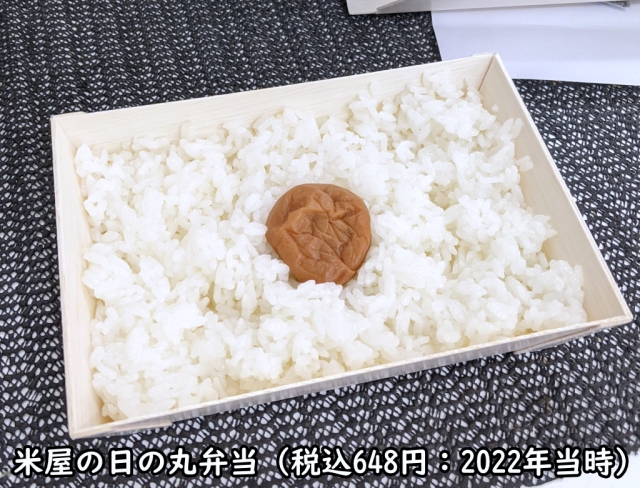
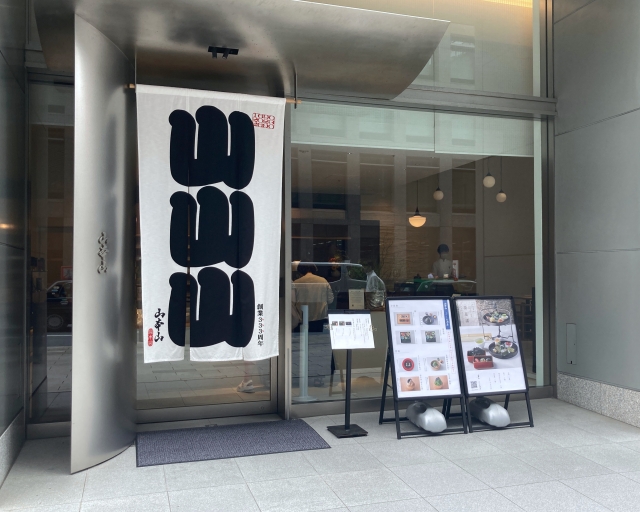
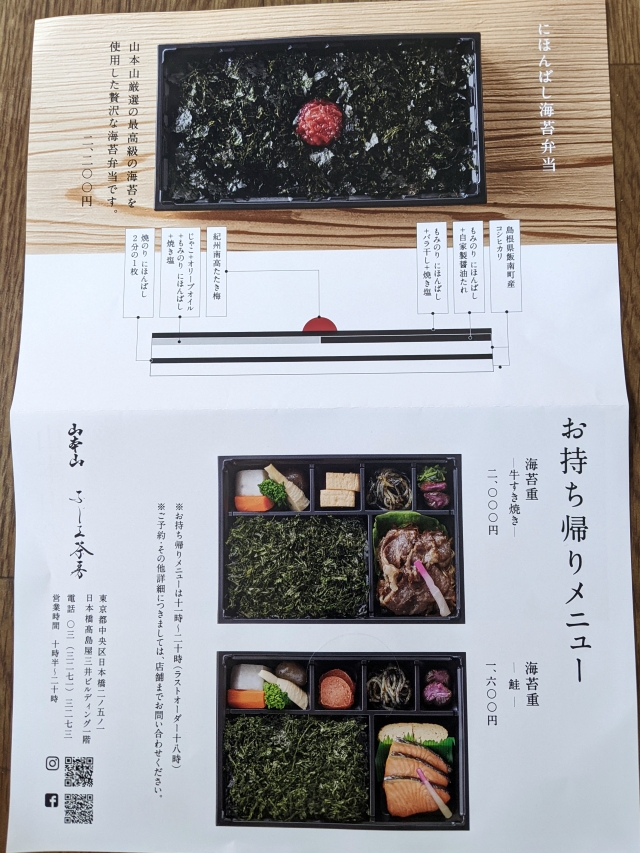
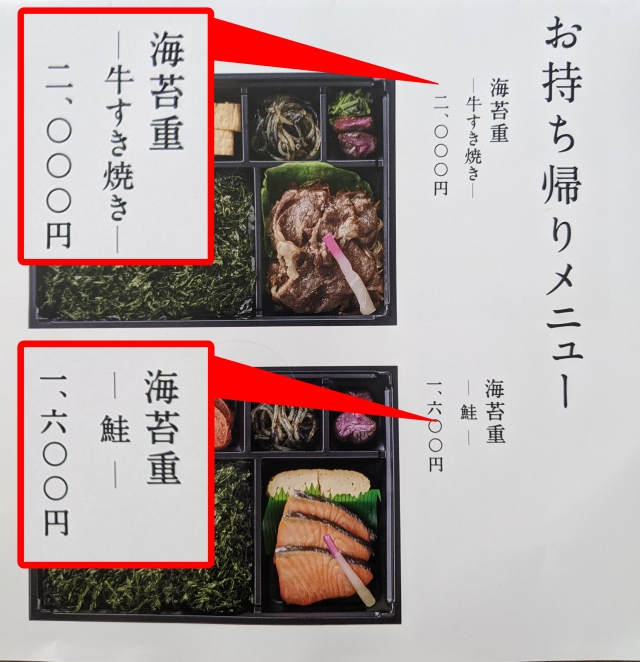

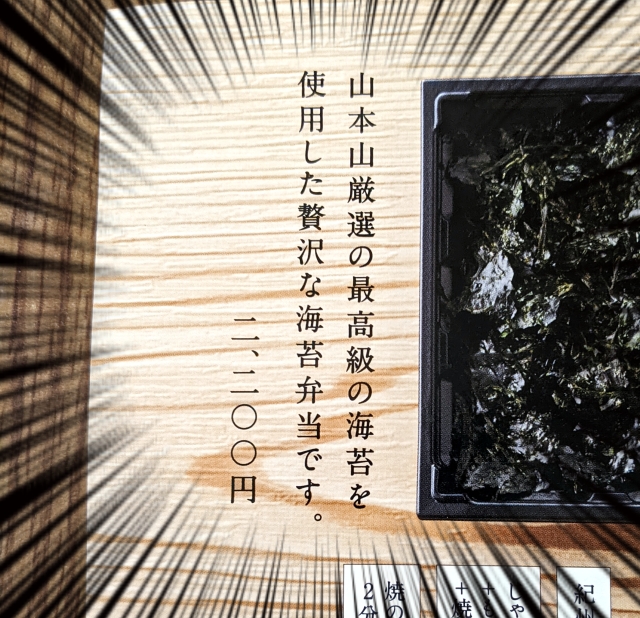
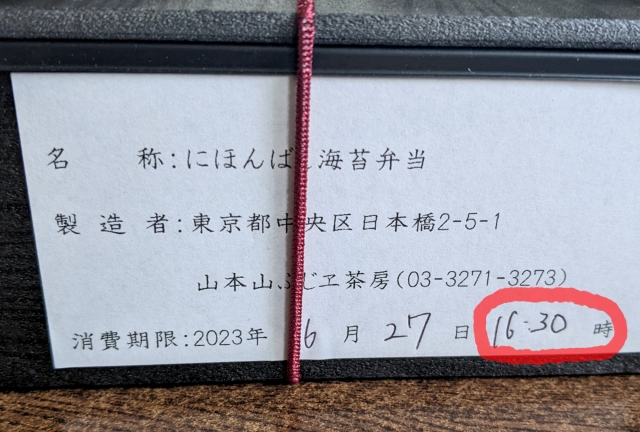

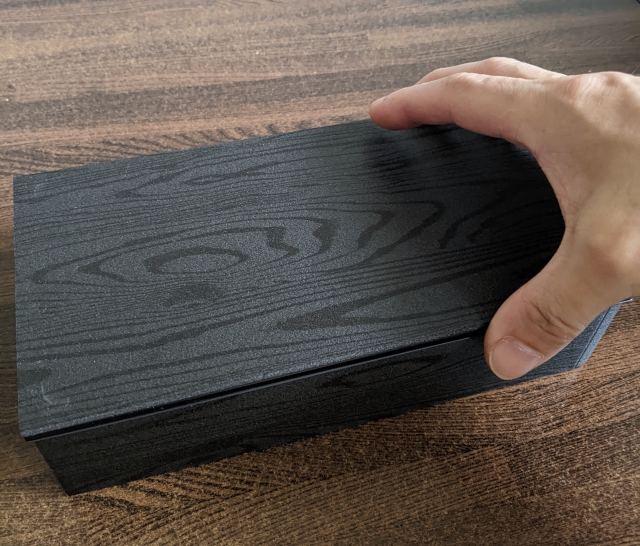
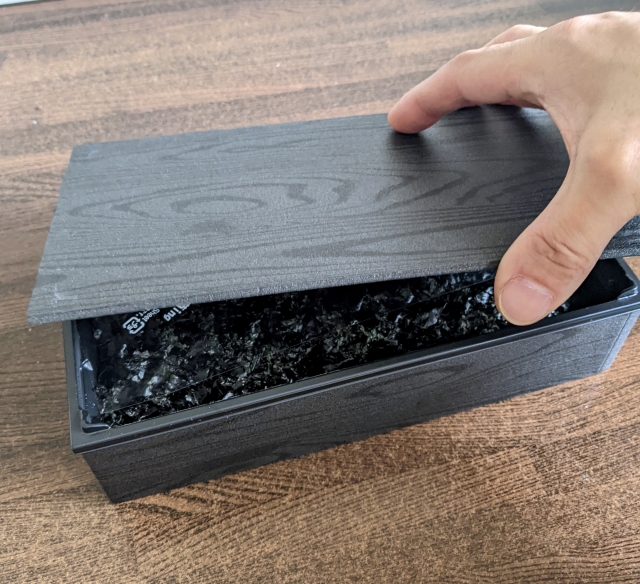
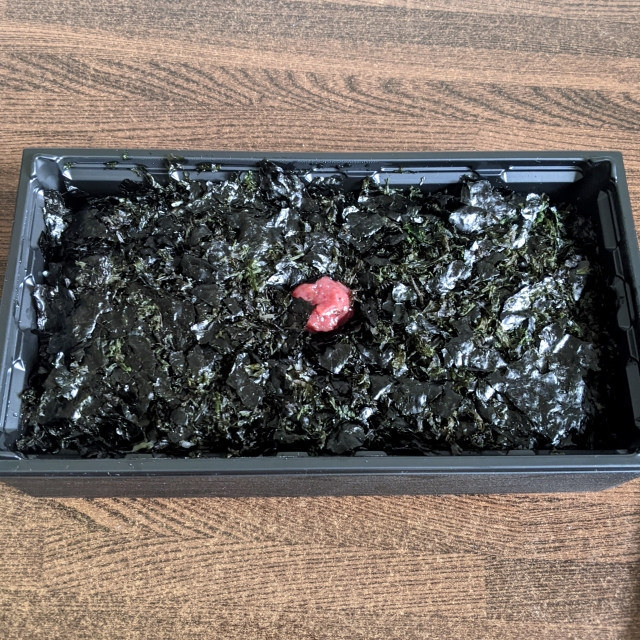
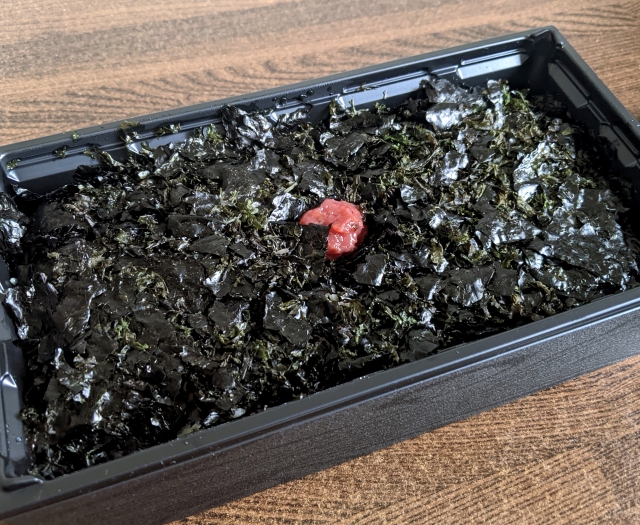
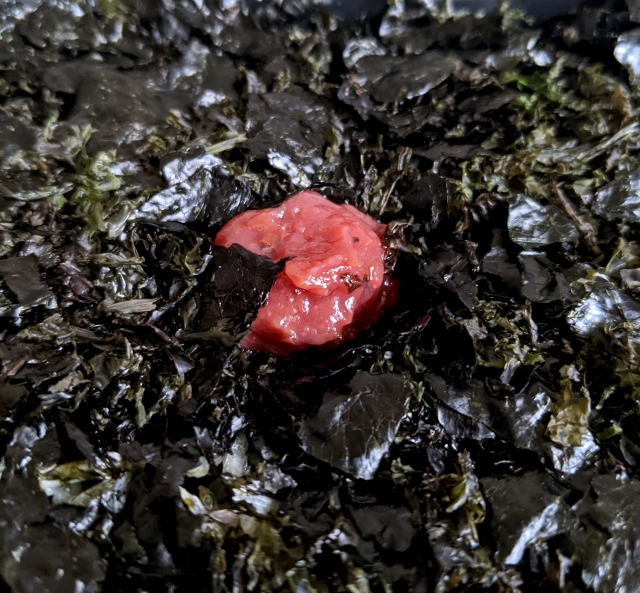
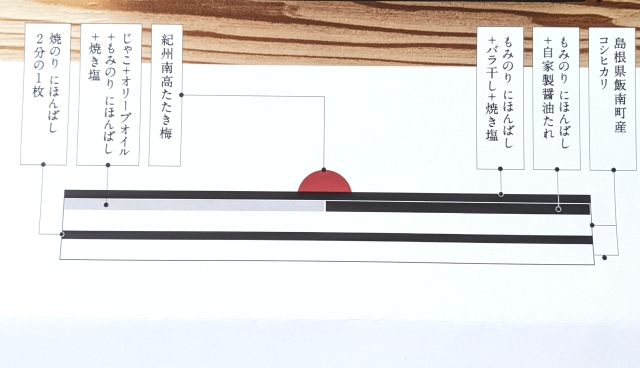
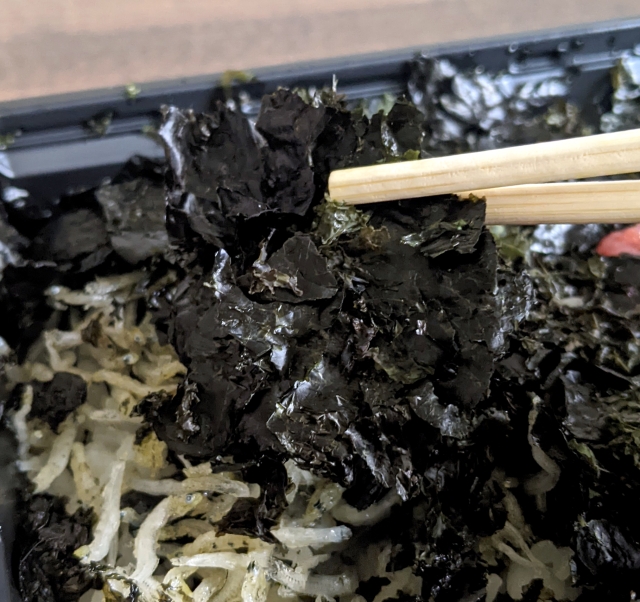
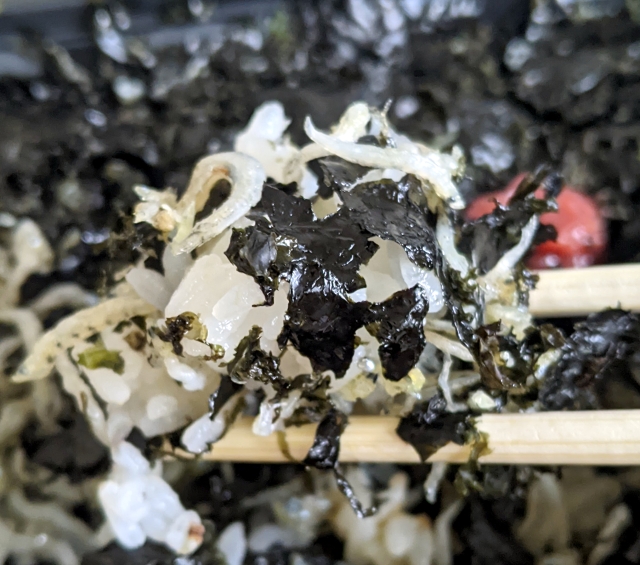
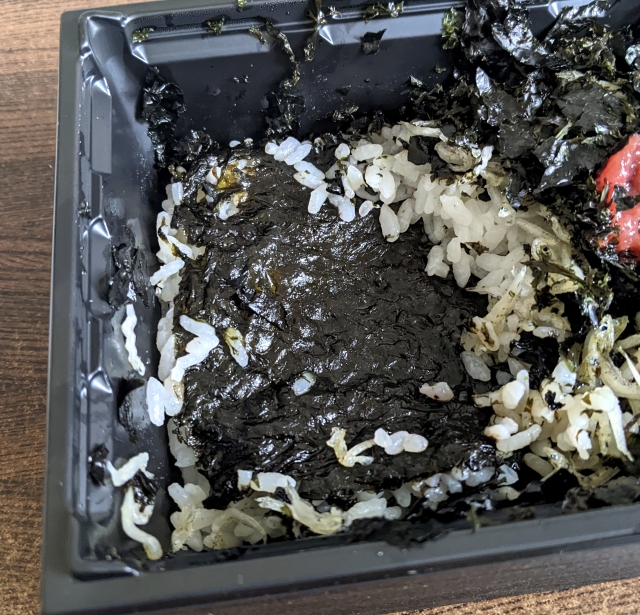
 This is what Tokyo’s ultra-premium 12,960-yen (US$117) seaweed looks like
This is what Tokyo’s ultra-premium 12,960-yen (US$117) seaweed looks like Tokyo Noriben Dog either reinvents or tarnishes the Japanese standard by putting a bento on a bun
Tokyo Noriben Dog either reinvents or tarnishes the Japanese standard by putting a bento on a bun The world’s most famous sushi restaurant sells seaweed too, so we made nori rice balls with it
The world’s most famous sushi restaurant sells seaweed too, so we made nori rice balls with it Tokyo department store’s best beef sushi bento combines two of the best things in life
Tokyo department store’s best beef sushi bento combines two of the best things in life Cup Noodle tries an authentic Jiro-style ramen, but something’s not quite right
Cup Noodle tries an authentic Jiro-style ramen, but something’s not quite right We revisited Sweets Paradise after a decade to see if Japan’s dessert buffet still delivers
We revisited Sweets Paradise after a decade to see if Japan’s dessert buffet still delivers That time Seiji called JASRAC to ask why he didn’t get paid royalties for his song being on TV
That time Seiji called JASRAC to ask why he didn’t get paid royalties for his song being on TV 7-Eleven Japan’s ramen-cooking robot whipped us up a bowl of noodles【Taste test】
7-Eleven Japan’s ramen-cooking robot whipped us up a bowl of noodles【Taste test】 What did Shibuya really look like after the crowds on New Year’s Day?
What did Shibuya really look like after the crowds on New Year’s Day? Our team of five reporters try to turn themselves into Japanese heartthrob Kimutaku【Photos】
Our team of five reporters try to turn themselves into Japanese heartthrob Kimutaku【Photos】 Survey finds more than 70 percent of Japanese children have an online friend
Survey finds more than 70 percent of Japanese children have an online friend New Japanese menstrual product seeks to help women spot unidentified iron deficiencies
New Japanese menstrual product seeks to help women spot unidentified iron deficiencies Combining all of Nissin’s new Cup Noodle series into one powerful bowl of ramen
Combining all of Nissin’s new Cup Noodle series into one powerful bowl of ramen Japanese osechi New Year’s meal lucky bag gives us way more than we bargained for
Japanese osechi New Year’s meal lucky bag gives us way more than we bargained for Starbucks Japan ready to get Year of the Horse started with adorable drinkware and plushies【Pics】
Starbucks Japan ready to get Year of the Horse started with adorable drinkware and plushies【Pics】 7 great places to see Mt. Fuji from without having to climb it
7 great places to see Mt. Fuji from without having to climb it Cyberpunk anime meets traditional culture in Ghost in the Shell gold leaf Japanese changing screens
Cyberpunk anime meets traditional culture in Ghost in the Shell gold leaf Japanese changing screens Hayao Miyazaki says Happy New Year to Studio Ghibli fans with new art for Year of the Horse
Hayao Miyazaki says Happy New Year to Studio Ghibli fans with new art for Year of the Horse Hello Kitty Choco Egg figures are an adorable trip through three periods of Japanese pop culture【Pics】
Hello Kitty Choco Egg figures are an adorable trip through three periods of Japanese pop culture【Pics】 We found possibly the quietest Japanese-style hotel in Tokyo’s bustling Shinjuku district
We found possibly the quietest Japanese-style hotel in Tokyo’s bustling Shinjuku district Sumo Sanrio! Hello Kitty and pals team up with Japan Sumo Association for new merch【Pics】
Sumo Sanrio! Hello Kitty and pals team up with Japan Sumo Association for new merch【Pics】 Japan’s oldest largetooth sawfish in captivity back on display in Mie Prefecture
Japan’s oldest largetooth sawfish in captivity back on display in Mie Prefecture More Than a Capsule Stay: Why Solo Travelers Choose “global cabin Yokohama Chinatown”
More Than a Capsule Stay: Why Solo Travelers Choose “global cabin Yokohama Chinatown” 7-Eleven Japan starts new temporary luggage storage service in over 300 branches
7-Eleven Japan starts new temporary luggage storage service in over 300 branches Disillusionment at Tsukiji’s tourist-target prices led us to a great ramen restaurant in Tokyo
Disillusionment at Tsukiji’s tourist-target prices led us to a great ramen restaurant in Tokyo Starbucks teams up with 166-year-old Kyoto doll maker for Year of the Horse decorations【Photos】
Starbucks teams up with 166-year-old Kyoto doll maker for Year of the Horse decorations【Photos】 Tokyo considering law requiring more trash cans following litter increase in heavily touristed area
Tokyo considering law requiring more trash cans following litter increase in heavily touristed area Tokyo’s Tsukiji sushi neighborhood asks tour groups to stay away for the rest of the month
Tokyo’s Tsukiji sushi neighborhood asks tour groups to stay away for the rest of the month Tokyo event lets you travel back in time, for free, to celebrate 100 years since Showa era start
Tokyo event lets you travel back in time, for free, to celebrate 100 years since Showa era start Sanrio theme park in Japan announces plans to expand into a Sanrio resort
Sanrio theme park in Japan announces plans to expand into a Sanrio resort Japan may add Japanese language proficiency, lifestyle classes to permanent foreign resident requirements
Japan may add Japanese language proficiency, lifestyle classes to permanent foreign resident requirements Stamina-destroying “Paralysis Noodles” are Tokyo’s newest over-the-top ramen innovation
Stamina-destroying “Paralysis Noodles” are Tokyo’s newest over-the-top ramen innovation Survey asks foreign tourists what bothered them in Japan, more than half gave same answer
Survey asks foreign tourists what bothered them in Japan, more than half gave same answer Japan’s human washing machines will go on sale to general public, demos to be held in Tokyo
Japan’s human washing machines will go on sale to general public, demos to be held in Tokyo Japan’s deadliest food claims more victims, but why do people keep eating it for New Year’s?
Japan’s deadliest food claims more victims, but why do people keep eating it for New Year’s? We deeply regret going into this tunnel on our walk in the mountains of Japan
We deeply regret going into this tunnel on our walk in the mountains of Japan Studio Ghibli releases Kodama forest spirits from Princess Mononoke to light up your home
Studio Ghibli releases Kodama forest spirits from Princess Mononoke to light up your home Major Japanese hotel chain says reservations via overseas booking sites may not be valid
Major Japanese hotel chain says reservations via overseas booking sites may not be valid Put sesame oil in your coffee? Japanese maker says it’s the best way to start your day【Taste test】
Put sesame oil in your coffee? Japanese maker says it’s the best way to start your day【Taste test】 No more using real katana for tourism activities, Japan’s National Police Agency says
No more using real katana for tourism activities, Japan’s National Police Agency says Starbucks Japan reveals new sakura drinkware collection, inspired by evening cherry blossoms
Starbucks Japan reveals new sakura drinkware collection, inspired by evening cherry blossoms Updated cherry blossom forecast shows extra-long sakura season for Japan this year
Updated cherry blossom forecast shows extra-long sakura season for Japan this year
Leave a Reply